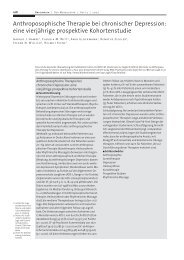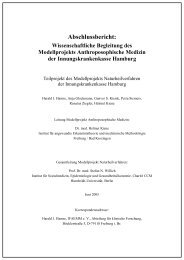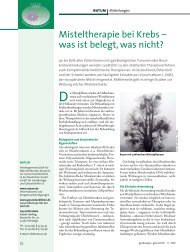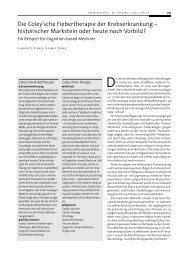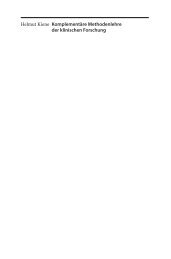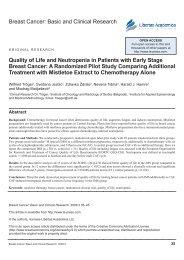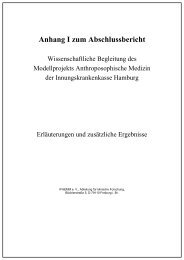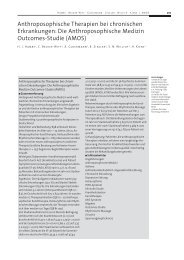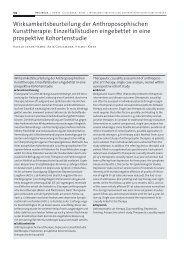Volltext (PDF) - Institut für angewandte Erkenntnistheorie und ...
Volltext (PDF) - Institut für angewandte Erkenntnistheorie und ...
Volltext (PDF) - Institut für angewandte Erkenntnistheorie und ...
Sie wollen auch ein ePaper? Erhöhen Sie die Reichweite Ihrer Titel.
YUMPU macht aus Druck-PDFs automatisch weboptimierte ePaper, die Google liebt.
Pulpa dentis D30 for acute reversible<br />
pulpitis: A prospective cohort study in<br />
routine dental practice<br />
■ Abstract<br />
Backgro<strong>und</strong>: Pulpa dentis D30 (PD: dental pulp of the<br />
calf, prepared in a homeopathic D30 potency) has been<br />
used in acute reversible pulpitis for pain relief and to<br />
avoid or postpone invasive dental treatment.<br />
Primary Study Objective: To study short-term clinical<br />
outcomes of PD therapy for acute reversible pulpitis<br />
in routine dental practice.<br />
Methods/Design: Prospective, observational, openlabel,<br />
single-arm cohort study<br />
Setting: Eleven dental primary care practices in<br />
Germany<br />
Participants and Intervention: Thirty-two patients<br />
starting monotherapy with PD for acute reversible<br />
pulpitis without visible or radiological abnormalities.<br />
PD was applied as 1 ml submucous injections into the<br />
mucobuccal fold, repeated daily as needed.<br />
Primary Outcome Measures: Avoidance of invasive<br />
dental treatment (pulp capping, root canal therapy,<br />
tooth extraction) and remission of pain, measured on<br />
a 0–10 point scale (partial remission: reduction by ≥ 3<br />
points; complete remission: reduction from ≥ 4 points<br />
to 0–1 point) during the 10-day follow-up period.<br />
Results: Median pain duration was 14.0 days. The<br />
patients received a median of 2 PD applications (range<br />
1–7). A total of 81 % (n = 26/32) of patients did not<br />
require invasive dental treatment, while 19 % (n = 6)<br />
had root canal therapy. Remission status was evalu -<br />
able in 24 patients. Of these, 63 % (n = 15/24) achieved<br />
pain remission, 58 % (n = 14) remitted without invasive<br />
dental treatment (complete remission: n = 12, partial<br />
remission: n = 2), and 29 % (n = 7) had a close temporal<br />
relationship between PD and remission (ratio “time to<br />
remission after first PD application vs. pain duration<br />
prior to first PD application” < 1:10).<br />
H a m r e e t a l . | P u l p a d e n t i s D 3 0 b e i a k u t e r r e v e r s i b l e r P u l p i t i s 233<br />
Conclusion: In this study of PD for acute reversible<br />
pulpitis, 58 % of evaluable patients achieved pain<br />
remission without invasive dental treatment. The<br />
open-label pre-post design does not allow for con -<br />
clusions about comparative effectiveness. However,<br />
more than one-fourth of evaluable patients remitted<br />
with a close temporal relationship between the first<br />
PD application and pain remission, suggesting a causal<br />
relationship between therapy and remission.<br />
■ Keywords<br />
Anthroposophic medicine<br />
Potentized organ preparations<br />
Pulpa dentis<br />
Pulpitis<br />
Prospective Studies<br />
Dentistry



